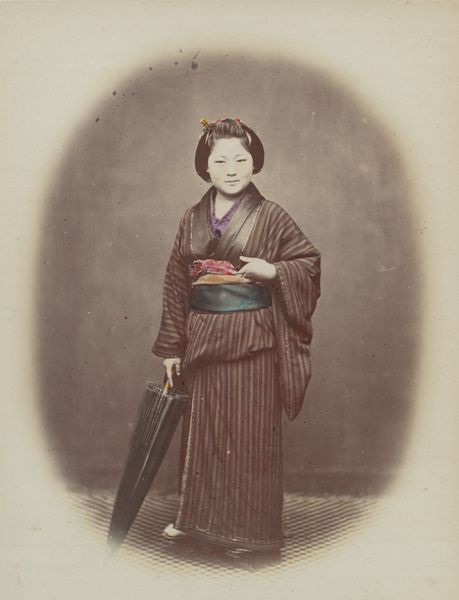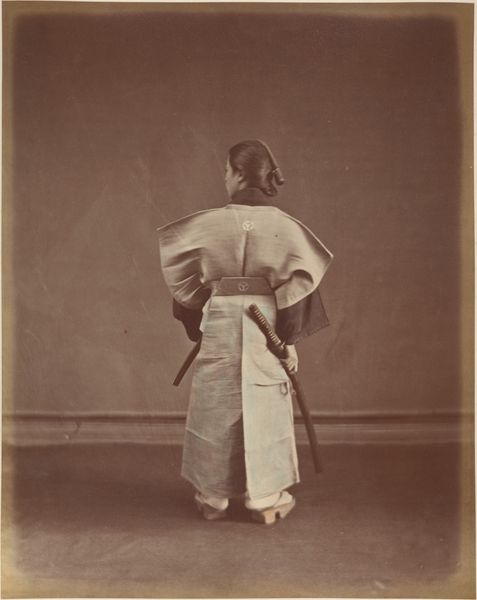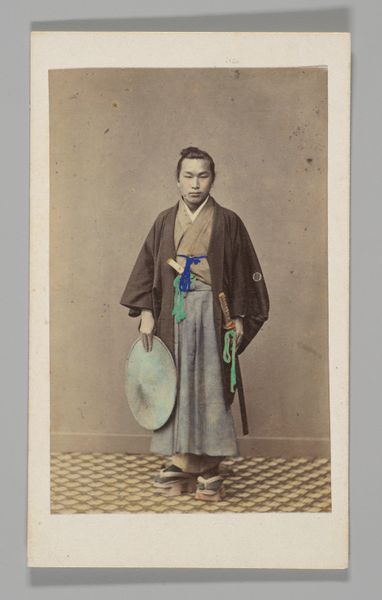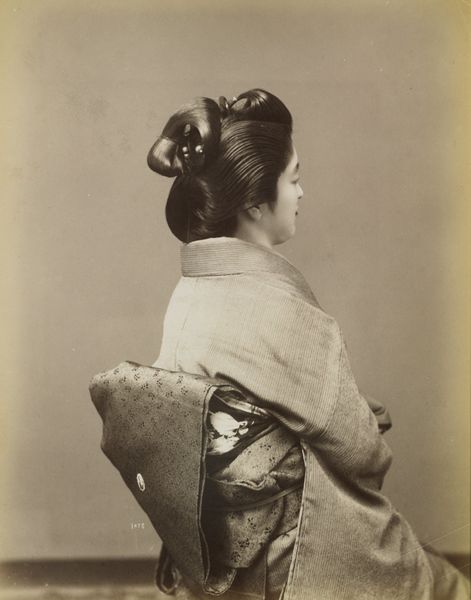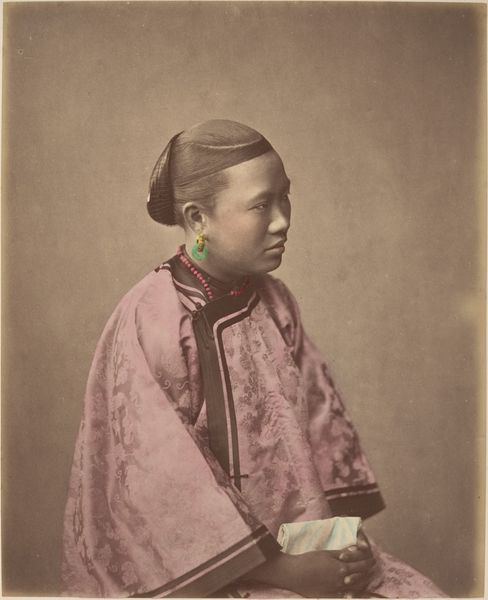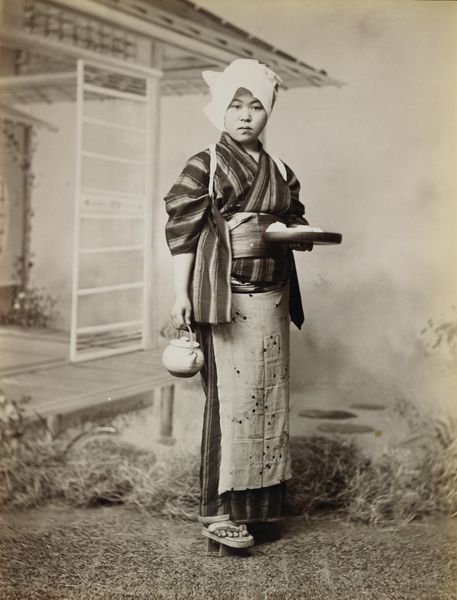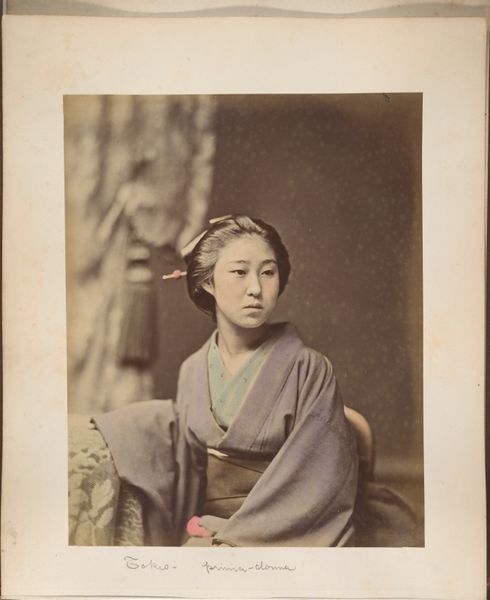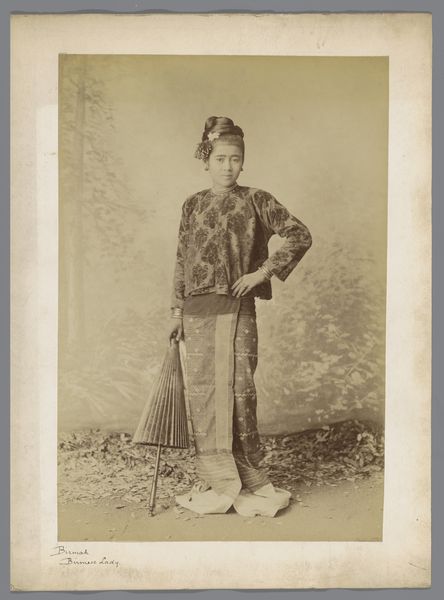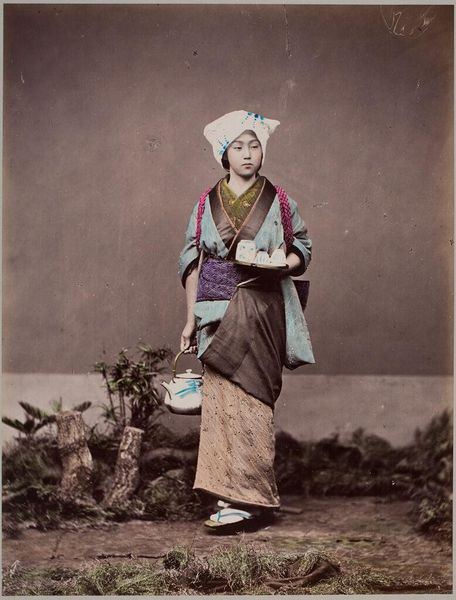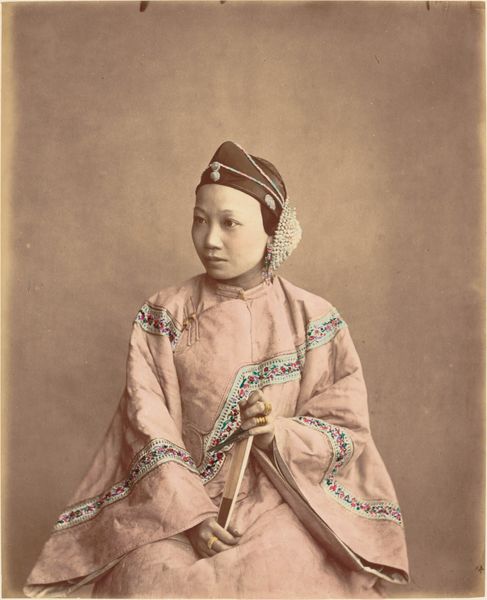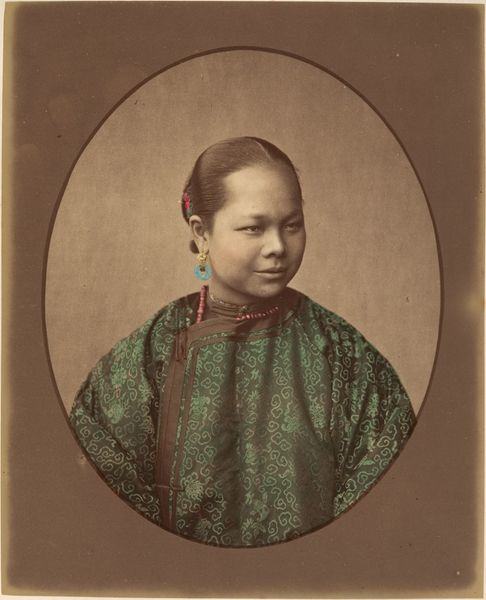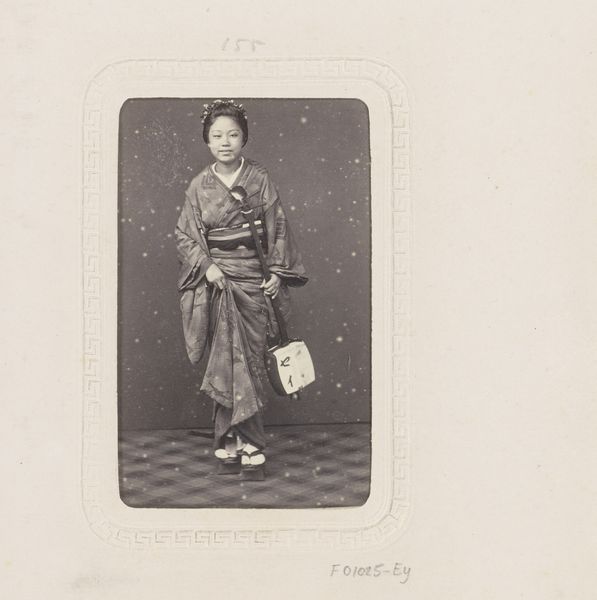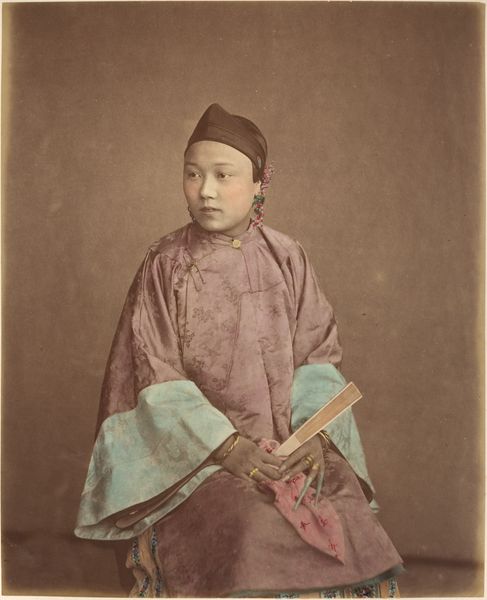
albumen-print, photography
#
albumen-print
#
portrait
#
photography
#
portrait reference
#
19th century
Dimensions: image (oval): 23.5 × 17 cm (9 1/4 × 6 11/16 in.) sheet: 25.5 × 21.5 cm (10 1/16 × 8 7/16 in.) mount: 49.5 × 35 cm (19 1/2 × 13 3/4 in.)
Copyright: National Gallery of Art: CC0 1.0
Curator: This is "Portrait of a Woman," a photograph taken around 1868 by Felice Beato. Editor: It’s striking. The textures are amazing; you can almost feel the weight of the fabric. Curator: Beato was an interesting character, active in Japan during a pivotal period. He made a name for himself documenting wars but later shifted his focus to commercial portraiture catering to Westerners eager to capture the ‘exotic East.’ Editor: I see the appeal for those consumers, certainly. I'm intrigued by the layered clothing—that beautifully patterned obi contrasts wonderfully with the dark kimono. What kind of materials are we looking at here? Silk? Curator: Likely silk, yes. It was common, but also consider the socio-economic implications. Access to silk indicated a certain status. And the backdrop, though simple, directs our gaze entirely to her posture and garb. Editor: Absolutely. The neutral background really emphasizes the materiality of her attire. There's a slight roughness too, suggesting hand-spun fibers and laborious weaving practices. I wonder about the social meaning of the fabrics, colors, and her pose… did Beato control these aspects? Curator: That’s the crux of it. How much is ‘authentic’ and how much is constructed for a Western audience? He’s documenting, but also framing an idea of Japanese womanhood that fit into the Orientalist tastes prevalent at the time. Think about the display—where were these photos shown? What narratives were they supporting? Editor: These kinds of photographs solidified visual tropes, no doubt influencing popular understanding. And, yet, looking closely, I detect a strength in her gaze, a refusal to be fully objectified. Curator: Indeed. Photography in this context becomes a contested space. On one hand, you have a colonial gaze appropriating and commercializing. On the other, you have a subject whose presence, however mediated, asserts its own existence. Editor: It all points to the intricate, messy intersections of culture, labor, and representation. Looking closely helps to pull apart these intertwined histories. Curator: Precisely, remembering the many voices involved gives the photograph a rich context.
Comments
No comments
Be the first to comment and join the conversation on the ultimate creative platform.
